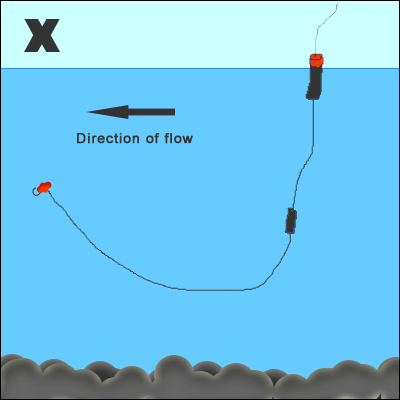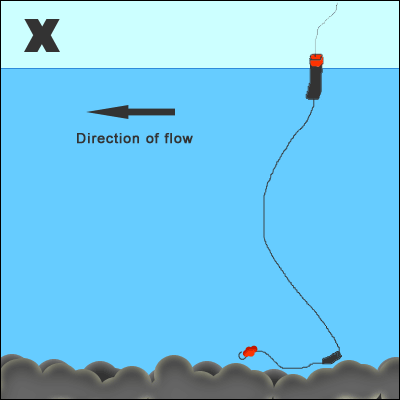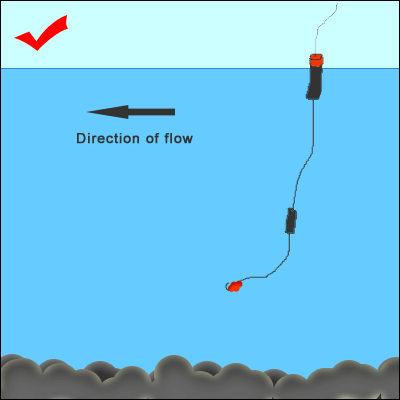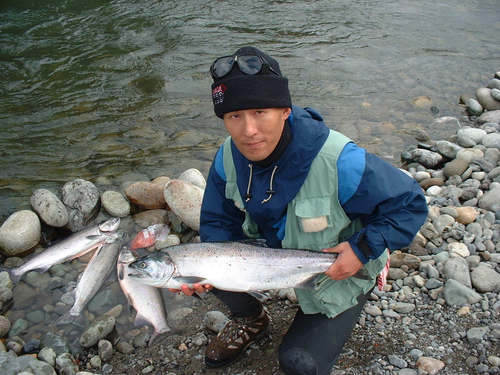Before the fall salmon season takes place on the Chilliwack River, I usually like to get this information up so those who are new to the fishery can have a chance to enjoy what this river has to offer by learning the techniques and staying informed on regulations.
The fall salmon fishery takes place between early September and late November on the Chilliwack River. There are four salmon species that anglers can target.
Some thoughts on locationsThe Chilliwack Vedder River is long. Some say it gets crowded, but only at certain spots. To have a good experience, it's best to avoid the busy spots. The busy spots are usually the visible ones that have easy access. These include Keith Wilson Bridge, railway bridge, Lickman Road, Peach Road, Vedder Crossing, Tamahi, Alison Pool, Limit Hole. By going to a spot where less people are fishing, the likelihood of you hooking into some quality fish is bigger since the fish are not spooked. Surprisingly, you can usually find a nice quiet spot by taking a very short walk from one of these busy spots.
Important regulationsThe salmon regulations of Chilliwack River can be found in
Region 2 of the Freshwater salmon supplement.
The current daily quotas for salmon in the Chilliwack River:
- Chinook: 4, but only one can be over 62cm.
- Coho: 4, but hatchery fish only (the ones that are missing an adipose fin).
- Pink: 4 (see notice)
- Chum: 1
- Sockeye: 0
You can only keep
FOUR salmon in total together, which means if you keep four coho salmon, you can't keep anymore chinook, pink or chum salmon.
Be aware of the difference between a coho and a sockeye. Some Cultus Lake sockeye salmon are also missing an adipose fin and they cannot be killed.
Read about it some more...The differences between a chinook salmon and a coho salmon can be hard to tell for a new angler.
Here is an article that tells you the differences between the two.
How to float fish more effectively for coho salmon?To effectively catch coho on the Vedder by float fishing, you want to keep your offerings in the strike zone. New anglers have a tendency to mistaken the strike zone as the depth where the fish are sitting. It is not. Salmonids look up and strike at the offerings above them. The fish position themselves near the bottom, so the strike zone is usually 1 or 2 feet above the river bed. This technique does not only apply to the Chilliwack River, but also other Lower Fraser River tributaries.
The diagrams below illustrate the correct and not-so-correct ways of float depth adjustment.
Excessive length of leader
For some reason, many people believe a longer leader would produce more fish, quite the opposite! Your hook will always travel faster than your weight in a river. By using a long leader, your hook and bait are lifted up higher from the river bed, away from the strike zone.
Excessive float depth
Some choose to adjust their float depth so the weight is "tapping" or sitting on the bottom. The weight will usually anchor itself to the river bed, while the float drifts slowly or becomes stationary. Two things will result from this setup:
- You'll snag onto the bottom, and lose your weight, hook and bait.
- Even worse, you'll end up snagging a pink or chinook in the belly or tail, which can be time consuming to bring in and release.
Rodney's way of float adjustment, but not necessarily the ONLY way
So far this has worked very well by producing about a dozen or more coho each season on the Vedder River without losing any hook, weight or line. I usually like to keep my leader length (the line between the hook and weight) around 1.5 feet in length. Judging the depth by looking at the gradient of the river bank and the water, I adjust my float depth (the length from the float to the hook) so that it is about 1 to 2 feet shorter than the actual depth. When this is drifted, the bait will lift a few inches higher, remaining in the strike zone. When the float dips under the water, there is no hesitation as I don't need to question whether it is a snag or a fish. The hook is usually set hard and most of the time the fight is on.
 Some other small adjustments
Some other small adjustmentsI find these adjustments would connect me into more fish in the past.
- The float size varies, small (11 grams) in clearer, slower water, while big (20 grams) in faster, deeper water.
- Tie on enough weight so only about 0.5 inch of your float (or the coloured tip) emerges on the water surface. This allows you to detect the bites sooner.
- Keep your main line (the line between your rod tip and your float) tight enough without disrupting the drift. Always try to avoid having any line laying on the water surface.
- Keep the drifts short. A longer drift doesn't necessarily mean a bigger chance to catch a fish.
- Avoid standing in the water, especially when you arrive at a new location. Undisturbed fish have a tendency to stay close to the river bank.
Additional readingsHelp us improve the Chilliwack RiverThere are two events during the Chilliwack River fall salmon fishing season that anglers can participate in.
- BC Rivers Day - On Sunday September 30th, the Chilliwack Vedder River Cleanup Coalition will be hosting its annual BC Rivers Day celebration at the Chilliwack Fish and Games Club House. The celebration will include a river cleanup, BBQ, entertainment, displays and draw prizes. More information...
- Help Habitat Fundraiser - The Chilliwack River Action Committee, which carries out projects on habitat improvement on the Chilliwack River, will be hosting its annual fundraiser at the Chilliwack Fish and Games Club on October 27th. Raffle tickets are $10 each. The fundraiser includes a complimentary salmon BBQ lunch, silent auctions, live auction and raffle draw at 1:00pm. Contact David Lamson at dflamson@shaw.ca for more information. Raffle ticket sale information will be available soon.

 Author
Topic: 2007 Chilliwack River fall salmon information (Read 8934 times)
Author
Topic: 2007 Chilliwack River fall salmon information (Read 8934 times)

